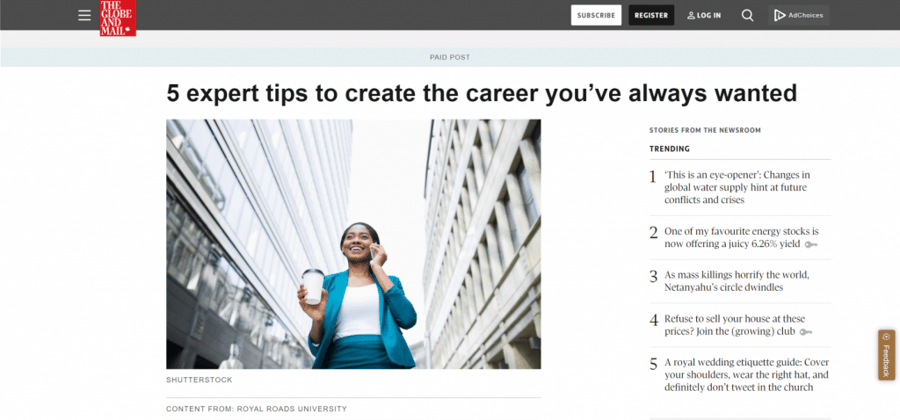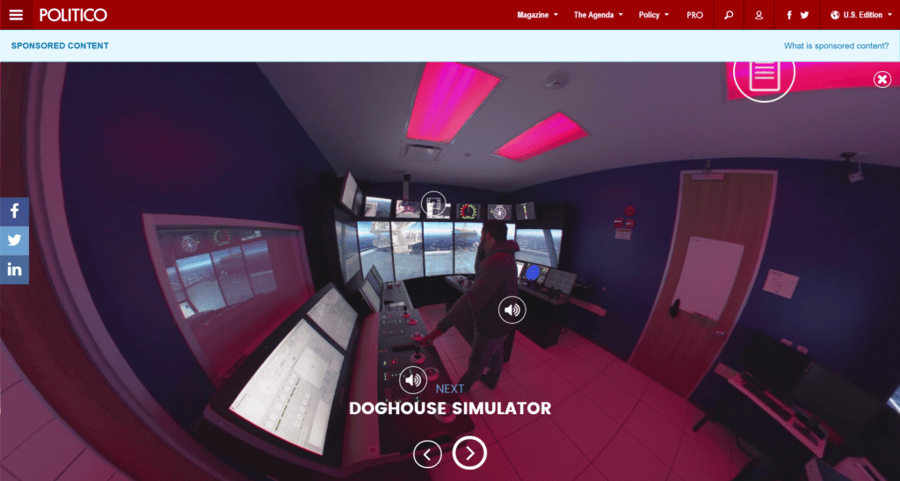
The First Principle of Brand Storytelling: Tell the T.R.U.T.H.
Brands are in a constant battle to gain and hold the attention of their audiences, bending over backwards to craft content that’s compelling and unique. And recently they’ve been handed another challenge to juggle: their reputation. Distrust of the media and advertising is on the rise, meaning that there’s never been a more difficult time to be in the marketing industry.
Recognizing this challenge, many publishers and brands have taken it upon themselves to improve their sponsored content efforts. We see it in the creation of branded content studios at media giants like The New York Times and The Wall Street Journal, and in unique content campaigns like “#MakeTechHuman” by Wired and Nokia.
So, how can you ensure you’re making good sponsored content?
In a keynote address at the 2017 Native Advertising DAYS conference, brand journalist Melanie Deziel offered words of wisdom for effective storytelling. Her gospel is simple: businesses need to tell the T.R.U.T.H.
If marketers can take this lesson (and acronym) to heart, they’ll be better able to reach their audiences in more effective and genuine ways. Next time you need to produce a great content campaign, keep the following points in mind:
T – Timely and Teaching
Timely: Brands should infuse themselves into the conversations around them, which often means framing content around current events, trends or upcoming holidays. Doing this offers readers a window into how your brand understands itself in relation to the world we live in. Not only that, but making your content highly relevant to the important stories of the day will allow you to leverage trends and events as tools to earn readers’ attention (a rare commodity these days). If the story you’re telling isn’t new, investigate whether there is any topical information you can reveal about it or find a different angle to approach it from.
Teaching: Another golden rule for creating useful content while building brand awareness is to offer something educational to your customers. Publishing content displays your brand’s knowledge and shows your audience that you’re aware of (and equipped to deal with) the challenges they may be facing. You want to offer the reader an item of value that they can take away — something that labels you as a thoughtful and helpful company in their mind. This is one of the reasons why advice-based articles are so common in the world of branded content: they provide readers with support, while simultaneously letting companies position themselves as experts on a topic.
The story you tell needs to matter to your readers, or they will lose interest once on the page.
R – Reputable
That said, while your company is an excellent source of expert information, your content needs to be backed up by claims other than just your own. As a rule, journalists include at least two sources in an article. This helps ensure that what they’re reporting is true and supported. If anything, branded content creators need to work harder than traditional journalists, considering their industry has yet to establish itself as particularly trustworthy. Plus, the rising trend of “fake news” offers brands an opportunity to become a trusted source of information for their target audience.
For this very reason, brands should find credible sources to take their sponsored content past the label of fake news. A few easy ways to accomplish this are to back up your statements with statistics, research and quotes, and to include the voices of industry experts (even those outside of your company) in any piece you publish.
Royal Roads University leveraged the expertise of their alumni and professors in this piece on The Globe and Mail.
U – Unique
According to a study by Adweek, around 93% of Generation Z consumers want brands to create something unique in order to connect with them. Every brand has a story that they can tell better than anyone else and an audience that wants to hear that story told in a topical and entertaining way. Brands should think like journalists when creating great branded content, but this doesn’t mean a career change for advertisers. What we’re getting at is the essence of journalism:
Telling stories that help readers understand the world and themselves through a fresh and interesting perspective. By adopting a journalistic mindset, businesses can highlight insights in their narratives and connect these nuggets of knowledge to a universal truth. The result is that your sponsored content becomes timeless, sets you apart from your competitors and forges intimacy and trust between your brand and the consumer.
To be honest is to embrace everything about your brand, strengths and weaknesses alike.
T – Tension
Audiences relate to struggles, risks, obstacles and high stakes presented in content. The story you tell needs to matter to your readers, or they will lose interest once on the page. To find that source of tension, think about the challenges your target audience is facing and what the consequences are if they don’t conquer
those challenges. While you don’t want to cross the line into fear-mongering, you need to dive into the real problems and issues facing readers and find a way to speak about the things they care about.
Discussing the tension in your own industry can be a great tactic. British Petroleum (BP) did this in partnership with Politico, with their piece “360 Degrees of Safety.” In it, readers used VR to explore the simulations and training exercises that BP uses to prepare crews for life on an oil rig. The piece simultaneously revealed the dangers and challenges of working on a rig while demonstrating how the company is taking steps to prepare their workers for the task. While creating content like this may require your business to be vulnerable, embracing openness as part of your storytelling is a way to deepen reader engagement and trust.
“360 Degrees of Safety” by BP and Politico took readers inside life on an oil rig.
H – Honest
To be honest is to embrace everything about your brand, strengths and weaknesses alike. Own it, and then communicate it to your audience as faithfully as you can. Be transparent about your sponsored content, choose topics you can speak about with authority and remember that trust is something that’s built over time. It takes consistent effort to earn the respect and loyalty of your readers, but putting in that effort up front will reap huge rewards in the future.
According to the Content Science Review’s article, “Why Compelling Brand Stories Need Honest and Consistent Content,” truth is the product that brands should be selling. By ensuring your company tells the T.R.U.T.H., you’ll be setting yourself up for branded content success.
(Disclosure: this content was originally published in The Science of Storytelling Issue 4: Automotive)
The growing problem of fraudulent web traffic
Do you know if your readers are humans or robots? With nearly 1/3 of all web traffic..
Get your Content Marketing Fix
Sign up to receive tips on storytelling and much more.
We promise to respect your inbox.




